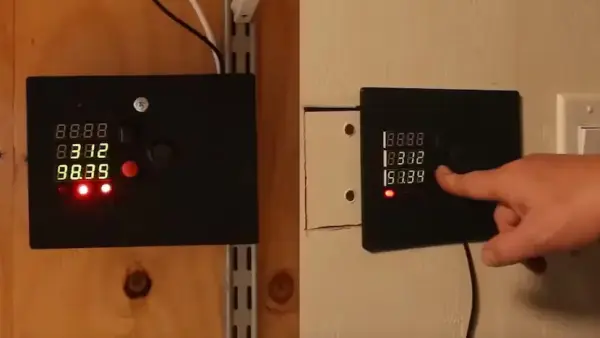Off-the-grid living
Residing in an area that’s removed from the nearest town/city provides an innumerable amount of benefits, yet many of the modern necessities we have come to expect in everyday life might be sorely lacking. One of the largest is, as the name “off-the-grid” implies, reliable access to electricity, meaning that most find themselves using a generator or some form of renewable energy source such as solar and wind. Kaleb Clark from element14 Presents utilizes both a generator and a solar backup, although his Honda EU-7000iS generator is quite far from his house and can be treacherous to reach in inclement weather, which is why he wanted to add wireless controls and monitoring to it.
How the system would work
Similar to a smart thermostat or other appliance, this remotely operated generator would need to not only have wireless starting capabilities, but also provide real-time data about its status and have a means to shut it down from inside the house. Clark wanted for his solar panels to provide nearly all of his house’s power whenever the sun is out and then quickly switch over to the generator backup when the clouds roll in. A front panel breakout cable takes the place of the key and starter button by allowing for one pair of conductors to enable the generator while connected and then turn over the starter motor when the other pair is briefly connected.
Getting the components
Performing the task of shorting each pair of front panel breakout wires together are two relay modules that, when signaled by a low-voltage source, close an internal contact and allow a current to flow across. The microcontroller and wireless module in this project is an Arduino Nano 33 IoT board. Each of the two is responsible for controlling the generator and displaying information on seven-segment display modules, with one being located inside the house and another inside the generator room. Since IO pins were running low due to the number of seven-segment LED modules, Clark added a pair of MAX7221 LED drivers.
Wireless communication and control
The power management system in this off-grid setup is a Cerbo GX which allows for the monitoring of multiple power inputs/battery charge state and even hosts its own MQTT broker service. Through it, Clark’s program running on the Arduino Nano 33 IoT boards can connect and then send or receive new information as it becomes available. Pressing the generator start button will trigger the generator to start once enabled while incoming information is parsed and displayed via a callback function so both modules always stay in sync.
Generator operation
When powered off, the panel’s top readout is dark and only begins displaying the wattage of the generator once it’s running. Below that is the wattage being produced by the solar panels, and the bottom seven-segment display cycles between the battery’s charge percentage and voltage.
Source: Controlling an Off-Grid Generator Over Wi-Fi with a Pair of Arduino Boards

